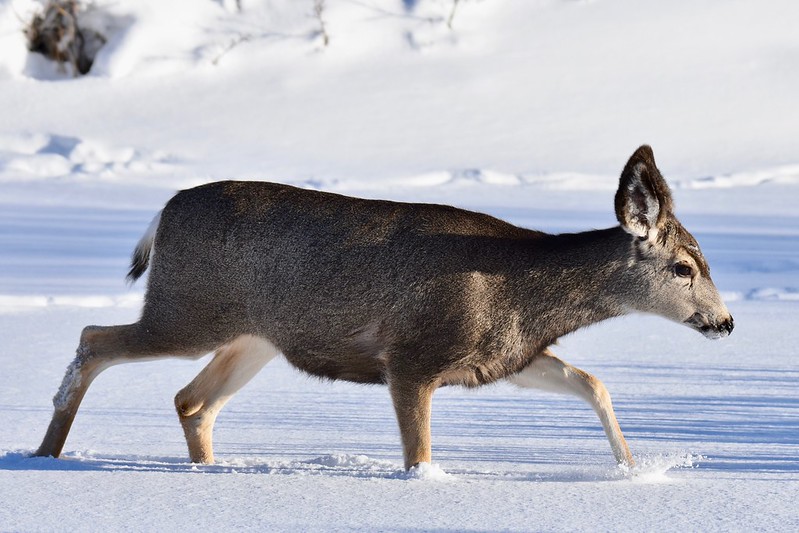It is that time of year where animals are migrating. No exception to this is big game. Moving from their summer range to their winter range. Especially in the West, mule deer and elk are on the move.
How does this affect you and what can you do to help?
Drive Carefully
Human expansion is ongoing and so is wildlife conflict. During the winter as big game herds make the transition to winter ranges, these conflicts increase. Wildlife such as deer and elk can get tangled in fencing and are more likely to be struck by a vehicle.
One of the key ways to help reduce negative interactions such as collisions is to drive slower.
“Slowing down, even just five miles per hour can greatly increase a driver’s reaction time to avoid a collision. This is especially important at dawn and dusk, when animals are more active and harder to see. Clearly no one wins in a wildlife-vehicle collision.” -Wyoming Fish & Game
Deer and elk are creatures of habit and instinct. Their migration routes rarely change and if you see one of them crossing the road one day, chances are they will always cross at the spot. Take a mental note of those places you see them crossing. This will also help you in avoiding a potential collision.
Prevent Poaching
Another great way to protect big game this winter is to call in on poachers. This is the time of year where animals will gather in large herds. The monster buck or bull you were looking for in the fall can oftentimes be seen on these winter ranges. These can be irresistible to big game poachers.
If you see suspicious activity, call it in. A quick phone call can help protect the animals and stop poachers.
“We end our hunting seasons when we do to protect these animals during the winter months when they are more vulnerable. These deer face many challenges, and blatant illegal shooting is especially disturbing.” – Wyoming Game and Fish Regional Supervisor John Lund
Game wardens continue to focus their attention on these mule deer winter ranges, but they still need help.
“We do not have the personnel to be everywhere, all the time, so we rely on reports from the public. There are quite a few people out there watching the deer and their reports of suspicious activity can be extremely helpful. Whether you’re a hunter or just a wildlife enthusiast, the illegal shooting of these animals should not be tolerated by anyone.” – Wyoming Game and Fish Regional Supervisor John Lund
You can read more about what Wyoming is trying to do to help wildlife by clicking here. Likewise, you can read more hunting-related news by clicking here.
By doing these simple things we can help reduce negative wildlife-human interactions. It also assists both human and wildlife populations.
So, what do you think of helping wildlife in the winter? Is there anything you do to help winter wildlife? Let us know in the comments!















